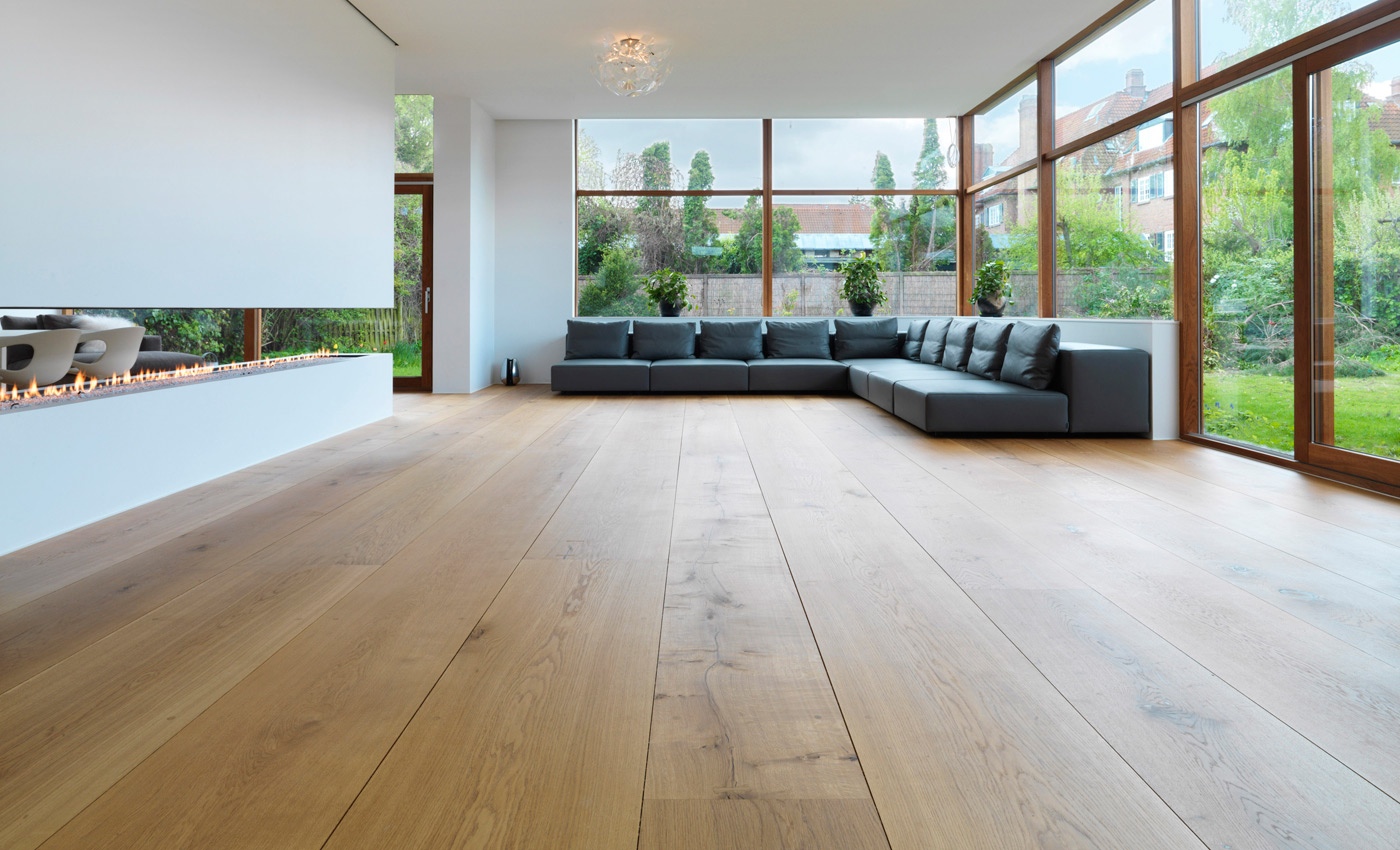Get to Know Your Hardwood Flooring Options
2016.10.26
Hardwood flooring is one of the most popular floor choices among homeowners and designers for many reasons. It’s sturdy, classic and elegant. However, going along with this choice for flooring doesn’t just involve choosing a colour or pattern.

There are actually several hardwood floor options, and some make more sense in certain environments than others. Being able to pick the best fit for your needs takes some research, but it’s important to take the time to understand your options. Take a look at how the different flooring options can impact the overall function and appearance of your home.

Understanding Solid Hardwood & Engineered Hardwood Flooring Options
These are two terms you’ll likely hear when starting your research. Solid hardwood floors are just what they sound like. Each board of hardwood flooring is made from a single piece of solid wood. A board is typically ¾ of an inch in thickness, so you’ll have lots of leeway to sand them down. While it is highly durable, solid hardwood can shrink and expand in response to the air humidity levels in your home. To reduce shrinking and expansion, try to keep your indoor humidity levels at about 45-55%.
On the other hand, engineered hardwood isn’t as “sensitive” to humidity. It’s much more resistant to shrinking and expanding since it’s made of two or more layers of wood that are bonded with adhesives. Engineered hardwood tends to be the popular choice for environments where temperature and humidity changes throughout the year—think of places like attics, basements and cottages.
The Differences Between Unfinished & Pre-Finished Hardwood Flooring
Choosing between these options will depend on your preferences and timeline. With unfinished flooring, you have to chance to work with a blank canvas. Create the look of your own floors by applying a finish and stain for colour. This is where you can truly add your own aesthetic throughout the house. However, when you apply finish yourself with oil-based polyurethane, be prepared to wait to allow the floor to completely dry. That can take up to several weeks. You’d want to avoid rearranging and moving furniture around during this time since it can scrape the floors.
The prep work for pre-finished wood flooring is done at the factory beforehand. Purchasing this option ensures that the colours are even and consistent and that the finish will be durable and long-lasting. It’s also easier to install since there aren’t various stages such as sanding and sealing to complete. A bonus is that finishes done within the factory usually come with a lifetime warranty.
Picking from Narrow or Wide Floor Boards
Don’t overlook this aspect as it can make a big impact on a room. Narrow floor boards are a very classic choice and are often seen in older homes. Wide floor boards, anywhere in the range of 4-7 inches wide, have become a popular pick for homeowners and designers. They add a contemporary touch and can make a room appear larger than it is. That’s particularly handy when you’re renovating small or narrow rooms. Keep in mind that wider boards are usually more expensive. It’s worth talking to a commercial flooring contractor if you are unsure what floor is best for your home.
Choose a Wood Species to Set the Tone of a Room
The wood species you choose for your floor plays a major role in the overall feel of a room. Walnut, for example, is a dark and rich-looking wood species that adds a warm and luxurious tone for example modern orangery types. Maple hardwood has a very light and creamy colour that brightens up any space. It’s also a top choice of many homeowners due to its shock resistance and durability. There are several options of wood species to choose from, and each one of them can add refinement to the home in their own ways.
Don’t Forget to Take Good Care of Your Floors
When you’re done shopping around at hardwood stores and installing them, you need to make an effort in maintaining them. This includes cleaning up any spills immediately so water doesn’t damage the wood. Another way to reduce wear is by adding floor mats or rugs to high-traffic areas. And as mentioned earlier, maintain the recommended humidity levels in your home with a humidifier to reduce wood shrinkage. These tips and more will help you keep your hardwood floors as flawless as possible for years to come.
More Articles
Copyright © Fooyoh.com All rights reserved.